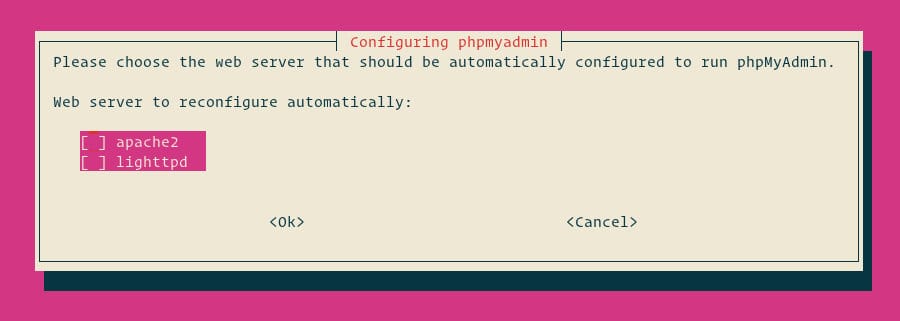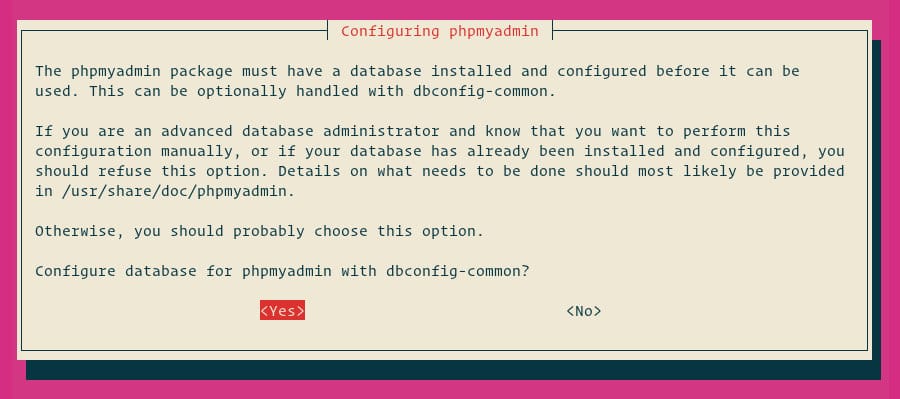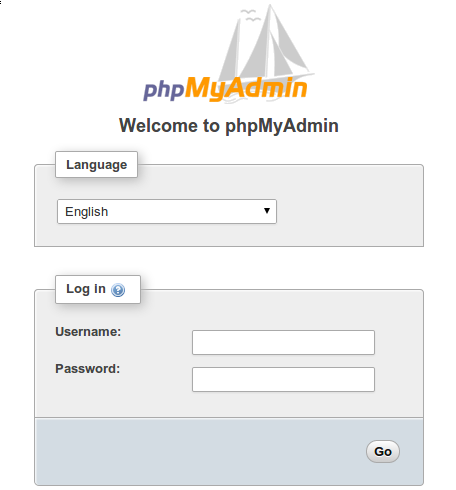
In this tutorial, we will show you how to install phpMyAdmin with Nginx on Ubuntu 20.04 LTS. For those of you who didn’t know, phpMyAdmin is a web-based client written in PHP for managing MySQL and MariaDB databases. It provides a user-friendly web interface to access and manage your databases. To ease usage to a wide range of people, phpMyAdmin is being translated into 72 languages and supports both LTR and RTL languages.
This article assumes you have at least basic knowledge of Linux, know how to use the shell, and most importantly, you host your site on your own VPS. The installation is quite simple and assumes you are running in the root account, if not you may need to add ‘sudo‘ to the commands to get root privileges. I will show you the step-by-step installation phpMyAdmin with Nginx on Ubuntu 20.04 Focal Fossa. You can follow the same instructions for Ubuntu 18.04, 16.04, and any other Debian-based distribution like Linux Mint.
Prerequisites
- A server running one of the following operating systems: Ubuntu 20.04, 18.04, and any other Debian-based distribution like Linux Mint.
- It’s recommended that you use a fresh OS install to prevent any potential issues.
- SSH access to the server (or just open Terminal if you’re on a desktop).
- A
non-root sudo useror access to theroot user. We recommend acting as anon-root sudo user, however, you can harm your system if you’re not careful when acting as the root.
Install phpMyAdmin with Nginx on Ubuntu 20.04 LTS Focal Fossa
Step 1. First, make sure that all your system packages are up-to-date by running the following apt commands in the terminal.
sudo apt update sudo apt upgrade
Step 2. Installing phpMyAdmin on Ubuntu 20.04.
Run the following command to install phpMyAdmin for Nginx on Ubuntu systems:
sudo apt install phpmyadmin
The installer will ask you to choose the web server that should be automatically configured to run phpMyAdmin. There is no option to choose Nginx, press TAB to select OK, and then Enter. We’ll configure Nginx in the next section.

Next, the installer will ask you whether you want to use dbconfig-common tool to set up the database. Select Yes and hit Enter.

Enter a password for phpMyAdmin to register with the database, select OK, and press Enter.

You will be prompted to confirm the password, enter the same password, select OK, and press Enter.

Step 3. Configure MySQL.
Now we create a new superuser account just for phpMyAdmin:
sudo mysql -u root -p
This will prompt you for a password, so enter your MariaDB root password and hit Enter. Once you are logged in to your database server you need to create a database for phpMyAdmin installation:
MariaDB> CREATE USER 'godet'@'localhost' IDENTIFIED WITH mysql_native_password BY 'your-passwd'; MariaDB> GRANT ALL PRIVILEGES ON *.* TO 'godet'@'localhost'; MariaDB> flush privileges; MariaDB> quit
Step 4. Configure Nginx.
We must create a symbolic link from the phpMyAdmin directory:
sudo ln -s /usr/share/phpmyadmin /var/www/html/phpmyadmin
Step 5. Accessing phpMyAdmin Web Interface.
Now open your browser and surf to http://your-ipaddress/phpMyAdmin and your PHPMyAdmin will ask you for the user and password of your MySQL installation, you can use root as user and the root MySQL password, or any other MySQL user/password.

Congratulations! You have successfully installed phpMyAdmin. Thanks for using this tutorial for installing phpMyAdmin with Nginx on Ubuntu 20.04 Focal Fossa LTS system. For additional help or useful information, we recommend you check the official phpMyAdmin website.